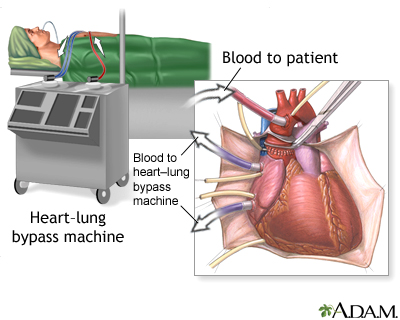
Overview
Heart-lung transplant operations have been performed since 1980 in the United States. The donated heart and lungs come from a human who has been declared brain-dead but remains on a life-support machine. A single recipient may receive one or both donor lungs. The tissues must be a match to help ensure that the patient does not reject the transplanted tissue.
While the patient is deep asleep and pain-free (general anesthesia), an incision is made through the breast bone (sternum). Tubes are used to re-route the blood to a heart-lung bypass machine that keeps the blood oxygenated and circulating during the surgery.
Review Date 1/20/2022
Updated by: Denis Hadjiliadis, MD, MHS, Paul F. Harron, Jr. Associate Professor of Medicine, Pulmonary, Allergy, and Critical Care, Perelman School of Medicine, University of Pennsylvania, Philadelphia, PA. Also reviewed by David Zieve, MD, MHA, Medical Director, Brenda Conaway, Editorial Director, and the A.D.A.M. Editorial team.


